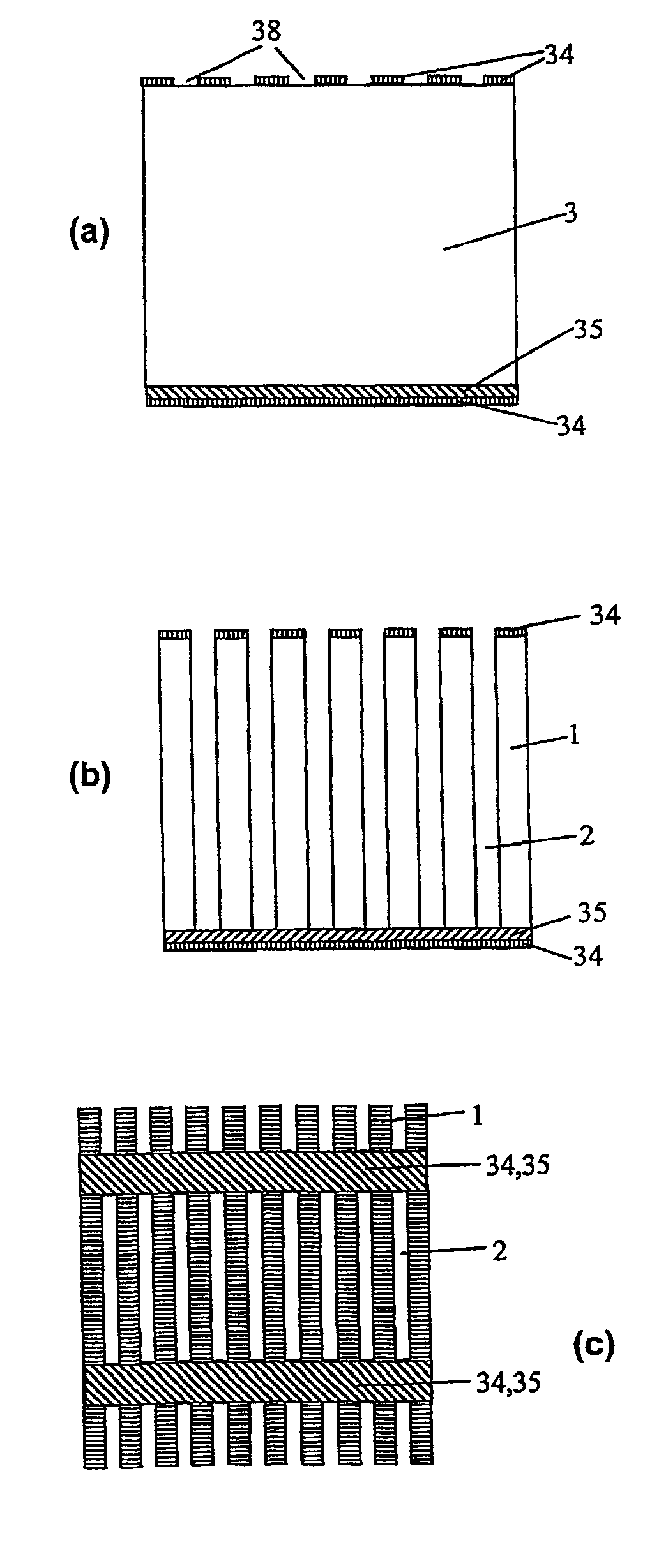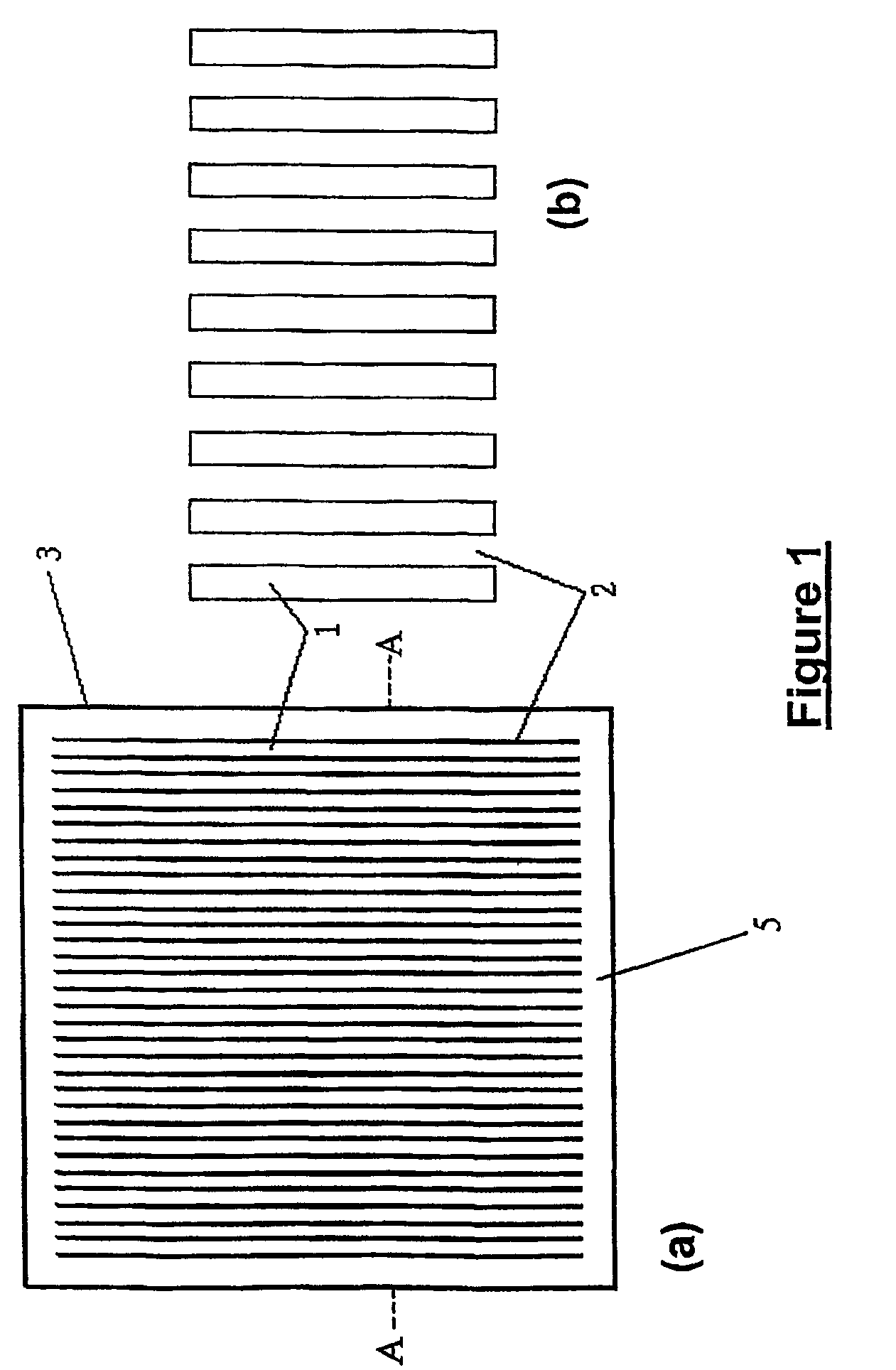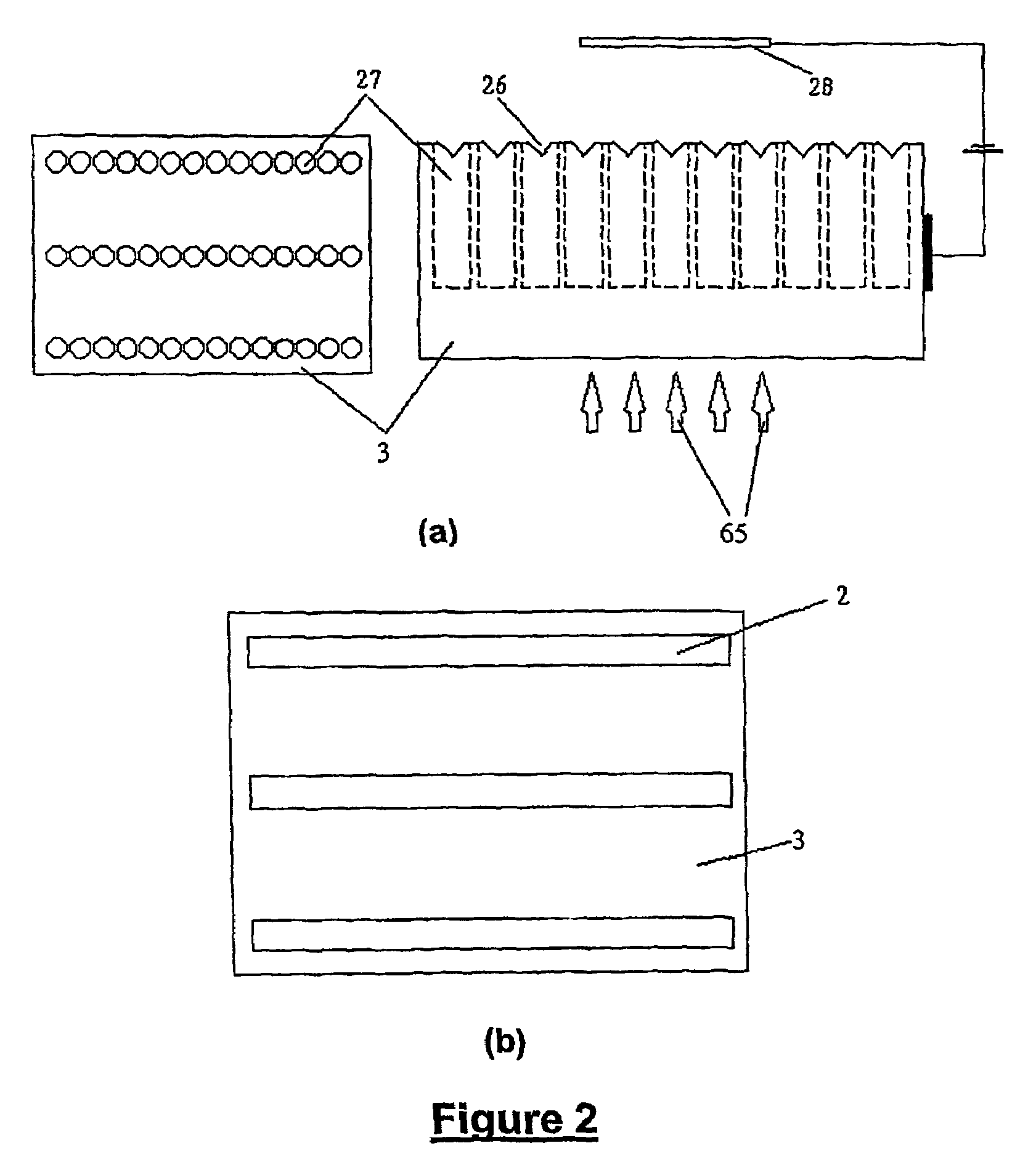Semiconductor processing method for increasing usable surface area of a semiconductor wafer
a technology of semiconductor wafers and processing methods, applied in the field of semiconductor wafer processing, can solve the problems of large bulky and large volume of the static concentrator system made with such cells, and achieve the effect of increasing the effective solar cell area
- Summary
- Abstract
- Description
- Claims
- Application Information
AI Technical Summary
Benefits of technology
Problems solved by technology
Method used
Image
Examples
example 1
Fabrication of Solar Cell
[0099]Solar cells have been fabricated as follows. 0.5 Ohm-cm, boron doped float-zoned wafers, 100 mm in diameter and 0.8 mm thick, were used as the starting material. The wafers were etched to remove any surface damage. A phosphorus diffusion was made into one side of the wafer (the top side) to a sheet resistance of approximately 50 ohm / square, followed by a boron diffusion into the rear side to about 50 ohm / square. A 100 nm thick oxide was grown on both surfaces, followed by deposition of 50 nm of silicon nitride. Cuts were made into the wafers from the top side using a dicing saw, with the cuts extending to within approximately 50 microns of the rear surface, to create silicon strips. The wafers were then given an etch in potassium hydroxide solution to remove any damage resulting from the cutting process. A phosphorus diffusion was then made into the grooves to about 100 ohm / square. An oxide was grown on the sidewalls of the strips to a thickness of 200...
example 2
Texturing Polished Silicon Surface to Decrease Reflectivity
[0101]A silicon nitride layer approximately 2 nm thick was deposited at 750° C. on a polished silicon wafer of (111) orientation, using low pressure chemical vapour deposition. A sample was cut out of the wafer and etched in a solution of 1:50 hydrofluoric acid:nitric acid for 150 seconds at 0° C. The sample was encapsulated behind 1 mm thick low iron glass using silicone and its reflectance was measured using a spectrophotometer with an integrating sphere. The sample had a reflectivity of 11% at 900 nm, while a polished encapsulated silicon reference wafer had a reflectivity of 24% and a sample of (100) oriented silicon textured with inverted pyramids had a reflectivity of 8% at the same wavelength. These results indicate that the texturing process is very effective at reducing reflection from the silicon surface. The results also indicate that the texture is likely to be very effective at confining light within the silicon...
PUM
| Property | Measurement | Unit |
|---|---|---|
| thickness | aaaaa | aaaaa |
| thickness | aaaaa | aaaaa |
| thickness | aaaaa | aaaaa |
Abstract
Description
Claims
Application Information
 Login to View More
Login to View More - R&D
- Intellectual Property
- Life Sciences
- Materials
- Tech Scout
- Unparalleled Data Quality
- Higher Quality Content
- 60% Fewer Hallucinations
Browse by: Latest US Patents, China's latest patents, Technical Efficacy Thesaurus, Application Domain, Technology Topic, Popular Technical Reports.
© 2025 PatSnap. All rights reserved.Legal|Privacy policy|Modern Slavery Act Transparency Statement|Sitemap|About US| Contact US: help@patsnap.com



